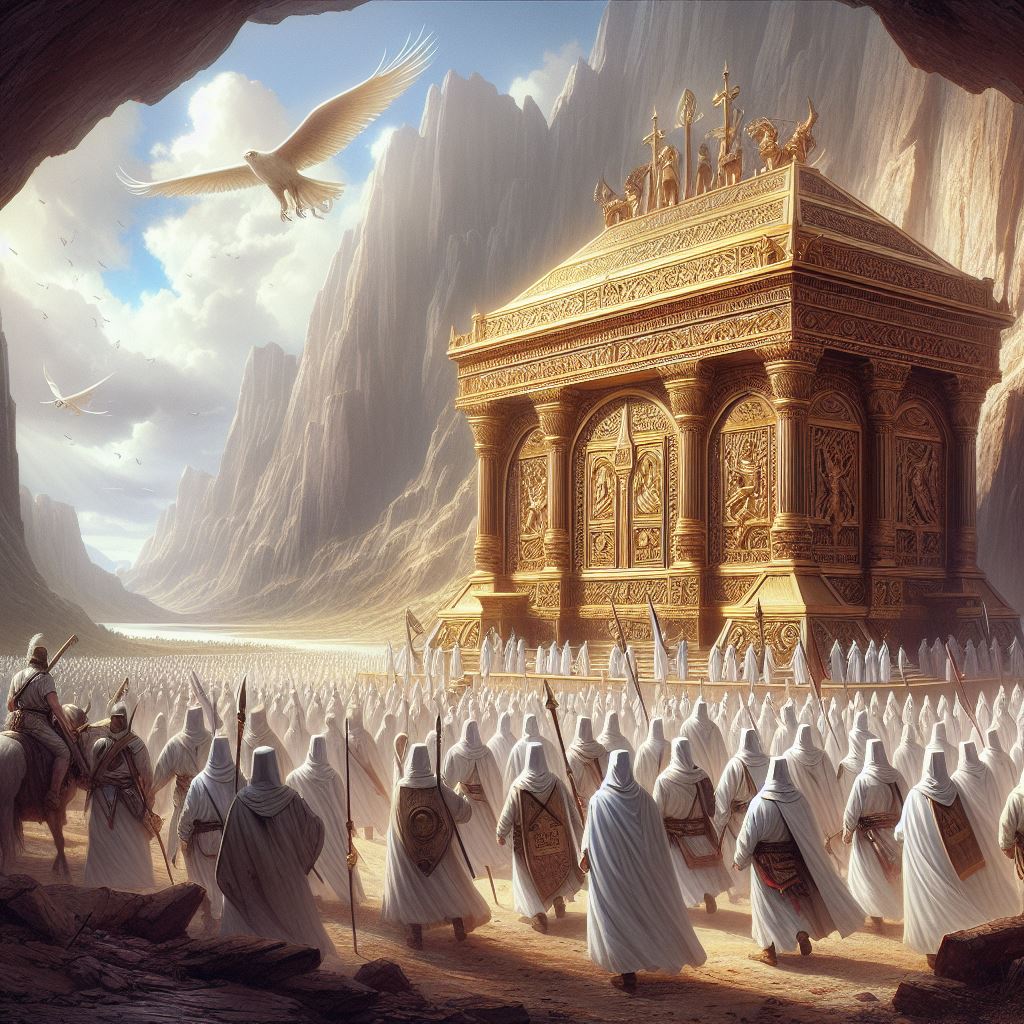A short train ride from the gorgeous art nouveau Rossio train station in Lisbon will bring you to the town of Sintra – playground of monarchs and a magnet for mystics. The poet Lord Byron called it a ‘Glorious Eden’ and you can see why. Rolling hills coated in thick forests punctuated by fairytale castles and palaces. But our main interest is its connection to the Templars and the significance of the so-called ‘Initiation Well’ at Regaleira palace.
This is an angle not explored enough in books and documentaries on the trial and destruction of the Knights Templar. We’ve heard plenty about the knights heading north with their treasure to Scotland and from there to the New World and possibly Oak Island. But what about a different scenario? The knights heading south to Portugal and joining their comrades in the Templar citadels of Sintra and Tomar.
From there, taking their wealth and expertise on long journeys around the world in the service of the King of Portugal but also to fulfil their centuries old mission.
In a series of three blog posts, I’m going to unpack this story in its entirety. My focus will be on Sintra and its links to the Knights Templar, the Order of Christ and the Freemasons. So let’s get to grips with what is a fascinating tale spanning the centuries.
DISCOVER: The well of initiation at Sintra
The Knights Templar take Sintra
The beginnings of Sintra lie somewhere in prehistory. The origin of the town’s name is often associated with the moon worship that local historians believe occurred in the area and is still evidenced by one of the hills being called Monte da Lua (Moon mountain in Portuguese).
For all you etymologists out there, the argument about the name runs something like this. The Celts, who ruled what is now Portugal before the Romans, revered the Moon goddess by the name Cynthia. The ancient Greeks believed that Artemis – their name for the moon goddess, was born on Mount Cynthus, located on the Isle of Delos in the Greek Cyclades. The later Arab rulers corrupted the word into as-Shantara and then that morphed again into Sintra.
Confusingly – and irritatingly – the Sintra city council website asserts that the origin of the word Sintra is the Indo-European word for the sun or “bright star” as the earliest medieval spelling is Suntria. Further research clearly needed!
It’s not hard to imagine how this place came to be regarded by the ancients as sacred with its caves, grottos and densely wooded hills. Celts, Romans and Visigoths were enchanted by the surroundings and settled in Sintra but in the 8th century AD there was a truly dramatic turn of events.
In the year 711, a Muslim army crossed over from Morocco into the Iberian Peninsula – initially at the invitation of a Visigoth prince involved in a dispute with a rival for power. He needed some muscle and so called on the Islamic caliphate that ruled territories from western Africa to India and up into the Russian steppes.
This proved to be a mistake. The fertile plains and wealthy towns of what is now Spain and Portugal were too tempting to the invaders and the whole peninsula rapidly became part of the Muslim world. Sintra would for a time be ruled directly from the huge Muslim metropolis of Cordoba though later power shifted to a local Muslim emir in Badajoz (now in modern Spain).
Slowly a Christian fightback began from the north with the emergent kingdoms of Leon, Castile, Navarre, and Aragon. But these crusaders didn’t have an easy time. The Muslim realm that ruled and developed cities like Seville, Cordoba, Toledo, Silves and what would become Lisbon had enormous wealth and resources. It took until the 12th century for a serious fightback to turn the tide decisively.
While the crusades in the Middle East turned against the Christian crusaders, the opposite was true in Iberia. The line between Christianity and Islam was pushed gradually southwards and the Knights Templar were very much at the forefront. Effectively holding the line in areas which were often prone to bloody fighting and swapped hands frequently between Christian princes and Muslim emirs.
A split off from the Kingdom of Leon created the Kingdom of Portugal and its first king, Afonso Henriques, was from a Burgundian family closely linked to the spiritual leader of the Knights Templar, Saint Bernard of Clairvaux. His family might also have known the earliest Templar knights – who came from the Champagne region of France. Afonso seems to have regarded himself as a de facto Templar ‘brother’ and deployed the knights as shock troops in his push southwards.
That is clear from the still standing string of Templar castles between the rivers Mondego and Tagus with the Templar citadel at Tomar being an impressive reminder today as well as evidence of their presence at Sintra. In the year 1147, King Afonso took the Muslim (Moorish) walled city of Al-Usbunna and renamed it Lisbon. At the same time, he gifted the Moorish town of as-Shantara to the Templars. When the knights turned up to claim their prize, the Moors had disappeared into the ether without a fight.
A Moorish geographer called Al-Bacr wrote in the 10th century that Sintra was a town enveloped in a dense fog that never seemed to dissipate. Now the Moors melted into that fog as if they had never been there. Lost in the mists of time.
There is a story that a solitary Moor – an old man – handed the keys to Sintra over to King Afonso and the Templar grand master in Portugal, Gualdim Pais. He then vanished. Most likely, it’s said, into a tunnel leading to an underground cavern called the Gruta dos Mouros. A wise move because the Moors would have been aware that after taking Lisbon, Afonso allowed the victorious crusaders three days to murder and plunder their way through what had been a rich Moorish metropolis.
There are tales that the Moors left behind the tomb of a king called Mariz whose resting place was guarded by demons. An Order of Mariz emerged with secret rites and I’ll describe that when we get to the story of Quinta da Regaleira at the turn of the 20th century.
Moors and Templars going underground
Some say that when the Templars arrived, the Moors scurried away into a secret web of underground passageways. There is indeed an entrance to a tunnel network at the sprawling Castelo dos Mouros (Castle of the Moors) with one tunnel reportedly running for eight kilometres to the Convento dos Capuchos (Capuchin monastery).
DISCOVER: Templar tunnels at Kerak castle in Jordan
Between 1970 and 1972, an archaeologist called Augusto Morgado investigated the tunnel from the Castelo dos Mouros and published his findings in the newspaper Epoca on 12 August 1972 confirming its existence.
Wherever you have Templars, you always have claims of tunnels and with Sintra this is especially the case. Under the Café de Paris there appears to be a hypogeum leading to the Palacio de Vila, which local historians are adamant was used by the Knights Templar. I’m told that while one tunnel heads off to the royal Vila palace, two fork northwards in the direction of the church of Saint Martinho.
Some of the underground spaces at Sintra seem to be naturally formed caves with stunningly visual geological formations while others may have been mines or tunnels built for a particular purpose.
Whatever the Templars were up to at Sintra – the town set in a fairytale forest and with an ancient history evidenced by Megalithic structures and Celtic lunar worship – now fell into the hands of the knights. Adding it to the line of forts granted to them by the King of Portugal. But this would not last forever.
To be continued…












2 thoughts on “Sintra and the Templars – part one”